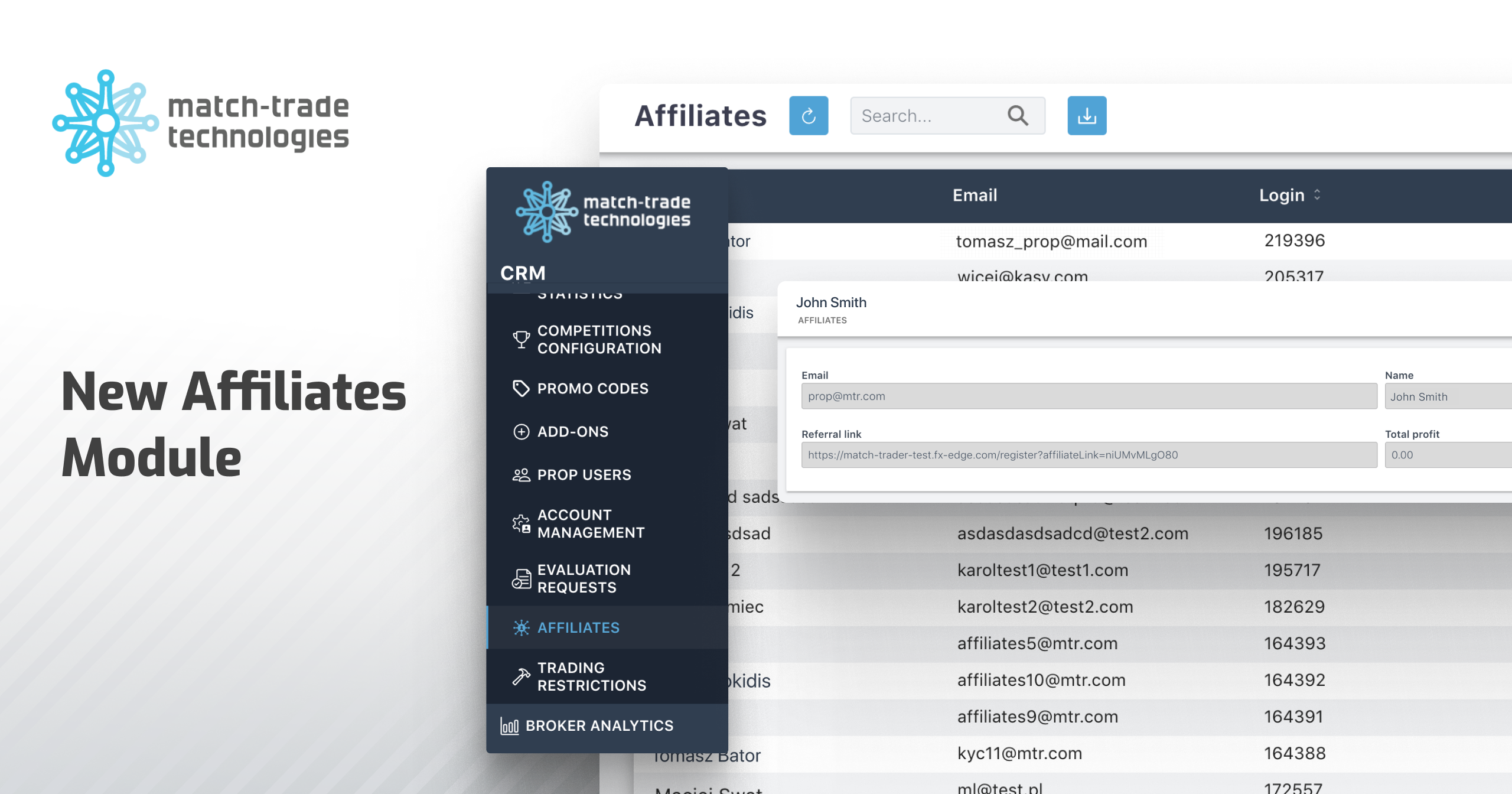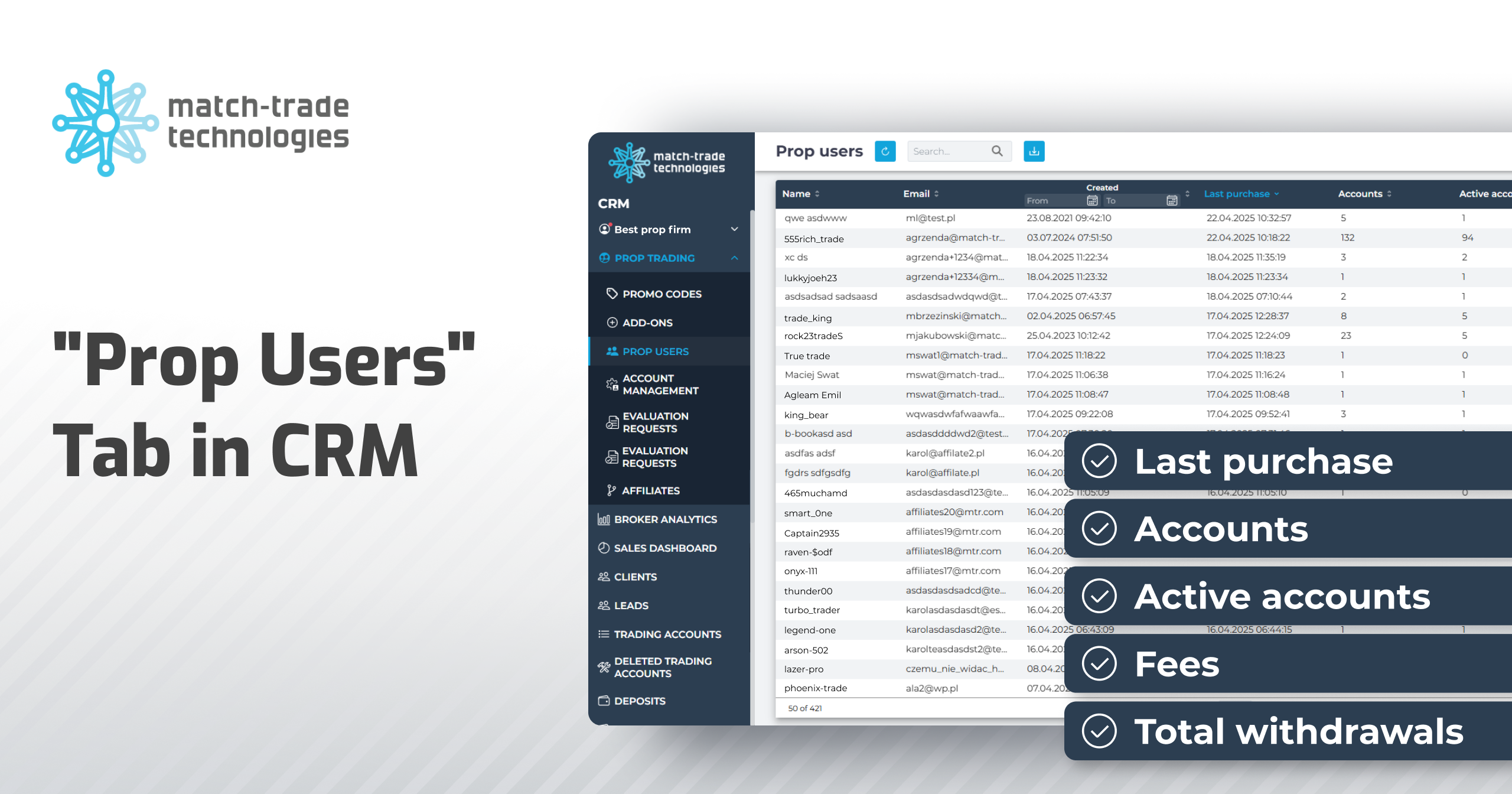1. Technology – trading platform
The most important part of Forex brokerage business is choosing the right trading system for as much it has to combine the needs of traders and ease the back-office management for a Broker. Therefore, on one side it has to be intuitive and user-friendly to attract novice traders but also offers advanced options to meet expectations of experienced traders.
Checklist of features for traders:
- Intuitive & easy to install
- Web/ mobile/ desktop apps
- Real-time settings’ synchro across all devices
- Deposits/ withdrawal straight from the platform
On the broker side, it needs to offer flexibility to integrate other useful tools and features via API. That could be CRM, or web forms, MAM and IB systems or plugins if it’s not already embedded in the system. Nowadays, customers perform their trader ‘on the go’ hence mobile version of the platform is a must. Although, it can be done on your own, finding a trusted technology provider who will advise or even better – takes care of the whole technology setup can bring serious savings.
Checklist of features for Brokers:
- All-in-one system
- Embedded CRM (Client Office)
- Customizable to match your brand
- Installation from the website (no Google/ Apple approval)
- Optimised for user retention
- Back-office apps in an affordable package
2. Payment system
As a regulated broker, you’re unlikely to face any problems with bank and credit card transfers. Although, you need to look out for the fees you or your customers will have to cover.
It gets tricky when you decide to conduct your business offshore. Of course, even European Brokers decided to expand in other regions to offer higher leverage and more flexibility. But in such case, even opening a bank account can be challenging. Also, transfers of your customers will be blocked by their banks, and credit card payments.
To handle your clients’ payments you need to connect your platform to an aggregator to access different Payment System Providers – the more the better your chances of successful payment processing are. This is the best way to solve the problem if not the only way to handle payments after FX industry regulations tightening.
Remember, nowadays traders expect the possibility of digital currency payments if you won’t enable it – they’ll find another Broker. Look for a fully automated digital currency payment gateway solution already integrated with Client Office (CRM) as it is the most convenient and cost-effective.
3. Liquidity
Carefully choose your business model:
- B book -> market maker. In this case scenario, you become the other side of your customers’ transactions. So you take all the risk and you need to cover all clients’ withdrawals. This model is recommended for experienced industry professionals rather than novice brokers.
- A book -> STP/ECN you make a deal with your Liquidity Provider and all of your clients’ transactions are mirrored at one Hedge Account run by your LP. You don’t take much risk but you also make fewer profits as you make money on mark-ups/commission. This model is recommended for start-up brokers who are just learning the FX business.
There’s always a possibility to mix both models of execution and create a hybrid. Take time to consider pros and cons or preferably find a trusted and experienced FX technology provider who will help you start your business from a scratch.
4. Register your company
You need a registered company to be able to sign legal agreements with Liquidity, technology and payment providers. There are three types of legal jurisdictions for forex services (unregulated, semi-regulated and regulated) varying in license cost and scope. It is crucial to choose a jurisdiction where you’ll be able to fulfil all requirements. Most of the novice brokers start offshore as the registration is just a formality (the cheapest and easiest to obtain).
5. Website – online presence
No matter how small you start you need to remember that you only succeed if you manage to gain and keep the customers. A website is a must-have. Once you create an ‘online business card’ (branded page) with all the info about your offer, contact forms, account registration etc., you need to take care of marketing to attract customers. As little as keeping your Social Media profile active can make a huge impact.
Starting a new business isn’t that difficult but for it to be successful it requires proper preparation and knowledge. It’s best to get support from an experienced company as cost optimization and preventing bad decisions will definitely pay off.



